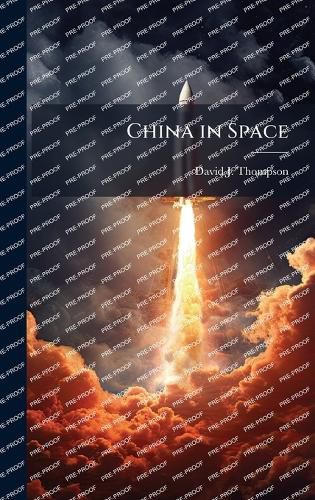Readings Newsletter
Become a Readings Member to make your shopping experience even easier.
Sign in or sign up for free!
You’re not far away from qualifying for FREE standard shipping within Australia
You’ve qualified for FREE standard shipping within Australia
The cart is loading…






On 8 October 1956, the Central Committee of the Communist Party of China, presided over by Mao Tse-tung, established the Fifth Research Academy of the Ministry of National Defense to develop a space effort. This was the official beginning of the People's Republic of China (PRC) space program. Just four years later, on 5 November 1960, China launched its first rocket becoming the fourth country behind Germany, the United States, and the Soviet Union, to enter space. The Chinese space program has survived periods of traumatic upheaval during its 44-year history. Today, space is the cornerstone of China's national science and technology development effort. Beijing is advancing China's space program on a number of fronts hoping to become a recognized international space power. The Chinese leadership under Jiang Zemin wants China to become a strong, modern, and ultimately wealthy nation, in short a great power. Given its natural resources, manpower, nuclear forces, seat on the UN Security Council, and growing economy, China wants parity with other great powers. To do this Beijing has crafted a national development strategy led by certain sectors. The purpose of this paper is to discuss how China's space program aids the government in reaching for great power.
This work has been selected by scholars as being culturally important, and is part of the knowledge base of civilization as we know it. This work was reproduced from the original artifact, and remains as true to the original work as possible. Therefore, you will see the original copyright references, library stamps (as most of these works have been housed in our most important libraries around the world), and other notations in the work.
This work is in the public domain in the United States of America, and possibly other nations. Within the United States, you may freely copy and distribute this work, as no entity (individual or corporate) has a copyright on the body of the work.
As a reproduction of a historical artifact, this work may contain missing or blurred pages, poor pictures, errant marks, etc. Scholars believe, and we concur, that this work is important enough to be preserved, reproduced, and made generally available to the public. We appreciate your support of the preservation process, and thank you for being an important part of keeping this knowledge alive and relevant.
$9.00 standard shipping within Australia
FREE standard shipping within Australia for orders over $100.00
Express & International shipping calculated at checkout
On 8 October 1956, the Central Committee of the Communist Party of China, presided over by Mao Tse-tung, established the Fifth Research Academy of the Ministry of National Defense to develop a space effort. This was the official beginning of the People's Republic of China (PRC) space program. Just four years later, on 5 November 1960, China launched its first rocket becoming the fourth country behind Germany, the United States, and the Soviet Union, to enter space. The Chinese space program has survived periods of traumatic upheaval during its 44-year history. Today, space is the cornerstone of China's national science and technology development effort. Beijing is advancing China's space program on a number of fronts hoping to become a recognized international space power. The Chinese leadership under Jiang Zemin wants China to become a strong, modern, and ultimately wealthy nation, in short a great power. Given its natural resources, manpower, nuclear forces, seat on the UN Security Council, and growing economy, China wants parity with other great powers. To do this Beijing has crafted a national development strategy led by certain sectors. The purpose of this paper is to discuss how China's space program aids the government in reaching for great power.
This work has been selected by scholars as being culturally important, and is part of the knowledge base of civilization as we know it. This work was reproduced from the original artifact, and remains as true to the original work as possible. Therefore, you will see the original copyright references, library stamps (as most of these works have been housed in our most important libraries around the world), and other notations in the work.
This work is in the public domain in the United States of America, and possibly other nations. Within the United States, you may freely copy and distribute this work, as no entity (individual or corporate) has a copyright on the body of the work.
As a reproduction of a historical artifact, this work may contain missing or blurred pages, poor pictures, errant marks, etc. Scholars believe, and we concur, that this work is important enough to be preserved, reproduced, and made generally available to the public. We appreciate your support of the preservation process, and thank you for being an important part of keeping this knowledge alive and relevant.